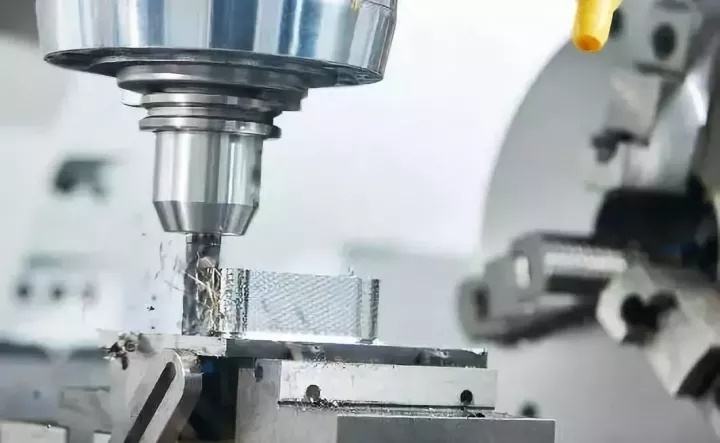What are the forms of NC tool wear?
1) rake face damage
When cutting plastic data at a higher speed, the part near the cutting force on the rake face will be worn into crescent concavity under the action of chips, so it is also called crescent pit wear. In the initial stage of wear, the tool rake angle increases, which improves the cutting conditions and is conducive to the bending and breaking of chips. However, when the crescent groove is further increased, the cutting edge strength is greatly weakened, which may eventually lead to the breakage of the cutting edge. When cutting brittle data or plastic data with lower cutting speed and thinner cutting thickness, crescent pit wear will not occur.
2) tool tip wear
The tool tip wear is the wear on the flank of the tool tip arc and the adjacent flank. It is the continuation of the wear on the flank of the tool. Because of the poor heat dissipation conditions and stress concentration, the wear rate is faster than that of the back cutter face. Sometimes, a series of small grooves with a distance equal to the feed rate will be formed on the flank of the vice cutter, which is called groove wear. They are mainly formed by the hardened layer of the machined surface and the cutting lines. It is easy to cause groove wear when cutting hard cutting data with high hardening tendency. Tool tip wear has great influence on the surface roughness and machining accuracy of workpiece.

3) the flank is worn
When cutting plastic data with large cutting thickness, the tool flank may not touch the workpiece due to the existence of chip accretion. In addition, generally, the rear cutter surface will touch the workpiece, and a wear belt with a back angle of 0 is formed on the rear cutter surface. Generally, in the middle of the working length of the cutting edge, the wear of the flank is uniform, so the wear degree of the flank can be measured by the width VB of the flank wear zone of the cutting edge.
Because all kinds of cutting tools will produce flank wear under different cutting conditions, especially when cutting brittle data or cutting plastic data with smaller cutting thickness, the tool wear is mainly the flank wear, and the measurement of the width of wear band VB is relatively simple, so VB is generally used to indicate the degree of tool wear. The larger VB, not only will increase the cutting force, cause cutting vibration, but also affect the wear of the tool tip arc, and then affect the machining accuracy and surface quality.
Source: Zhongshan CNC tool http://yaoclub.cn
-
10-12
What are the causes of chip accretion on NC tools?
The reason is that the chip bottom metal is embedded in the micro uneven peak valley on the front cutter surface due to the large down pressure in the part close to the cutting edge, forming a gap free metal to metal touch, which is called the bonding area. In the bonding zone, there will be a thin layer of metal data accumulated on the rake face at the bottom of the chip. The metal data of this part of the chip is severely deformed and strengthened at the appropriate cutting temperature. With t
-
10-12
What are the wear types of tungsten steel milling cutters?
Abrasive wear machining materials often have some very hard particles, these particles will form grooves on the surface of the tool, which is the grinding loss. All surfaces are worn, especially the rake face. In addition, although the wear of hemp occurs at various cutting speeds, the wear caused by other reasons is not obvious due to the low cutting temperature at low cutting speed, so it is mainly the abrasion of abrasive materials. The lower the tool hardness is, the more serious the grindin